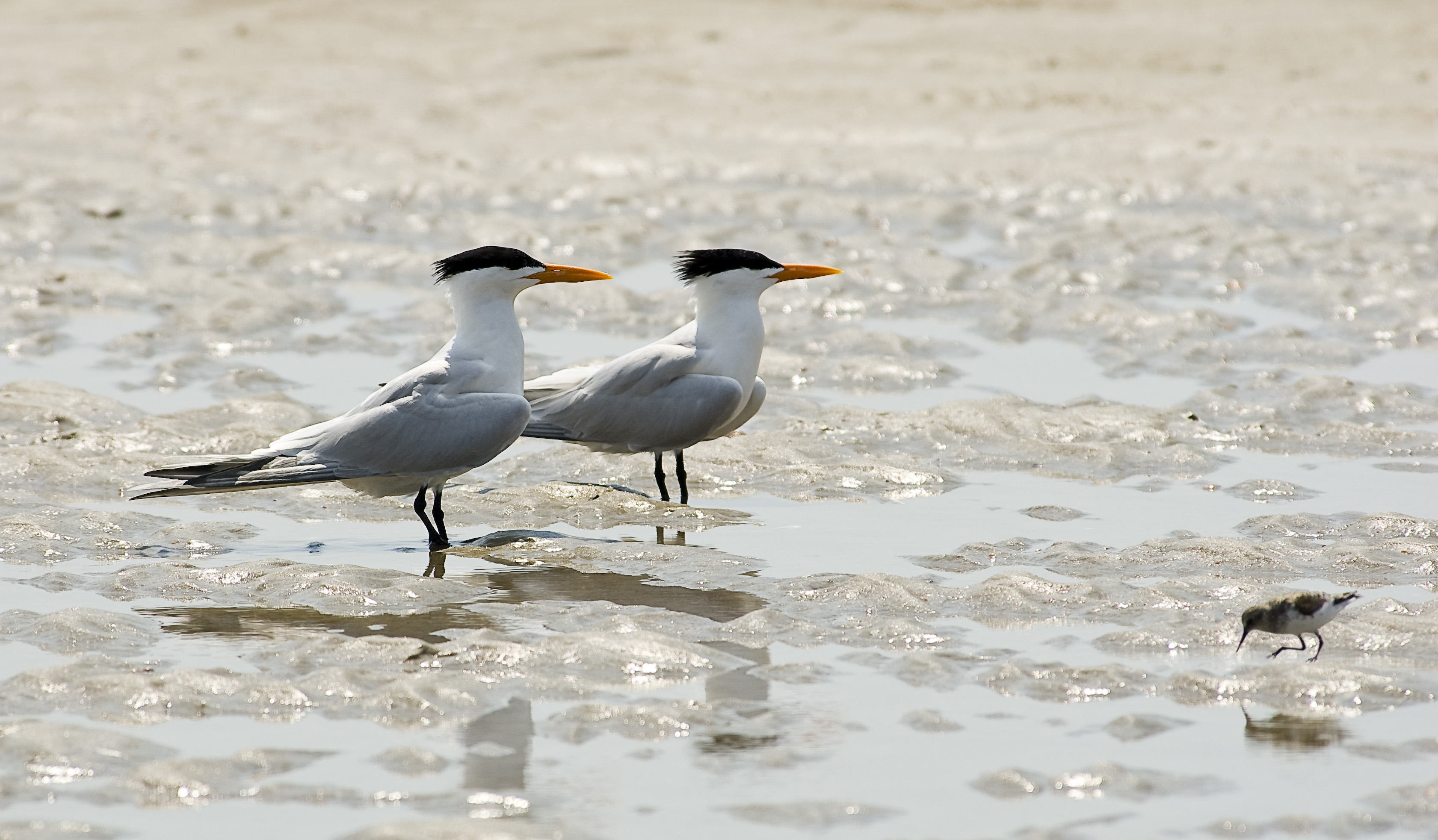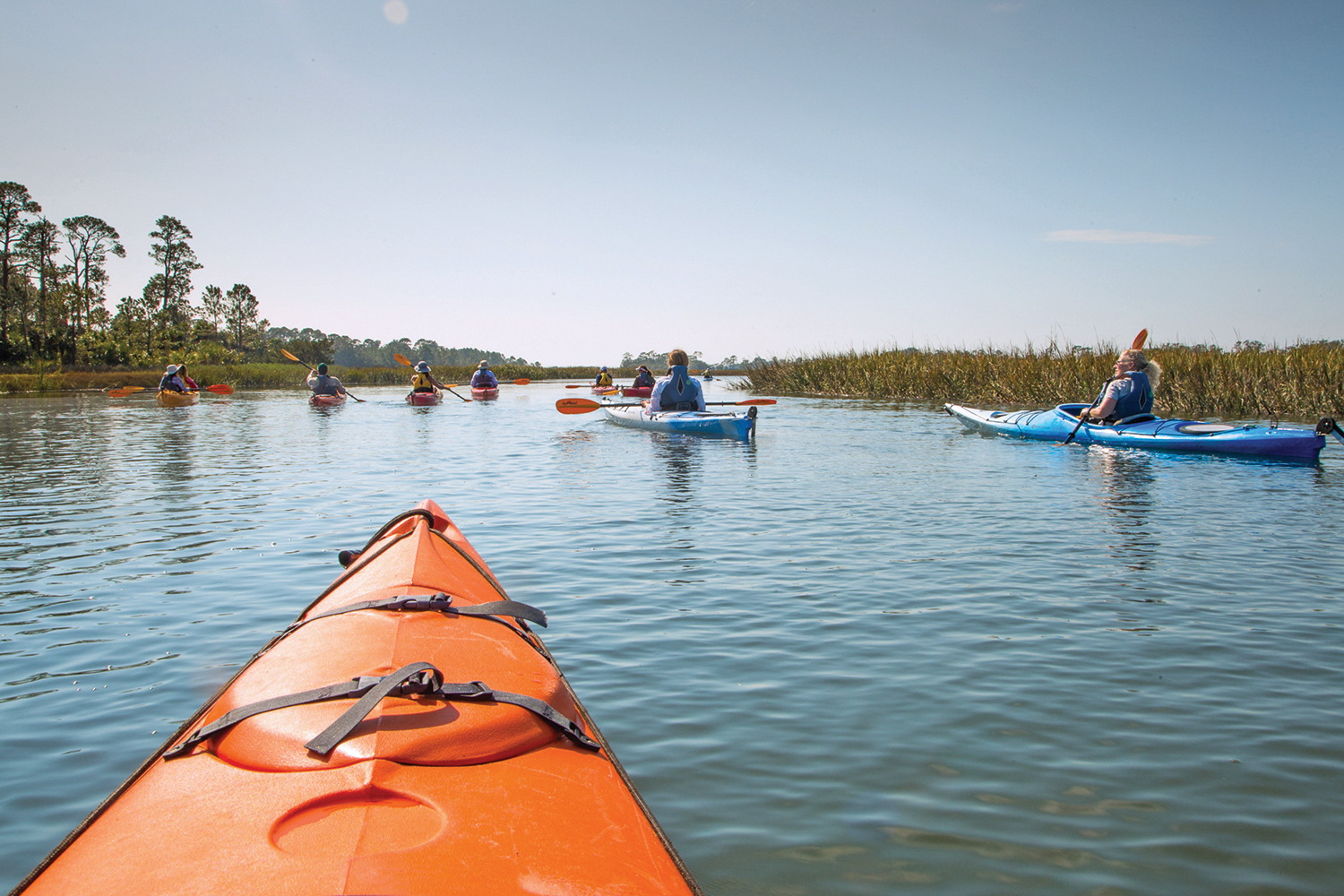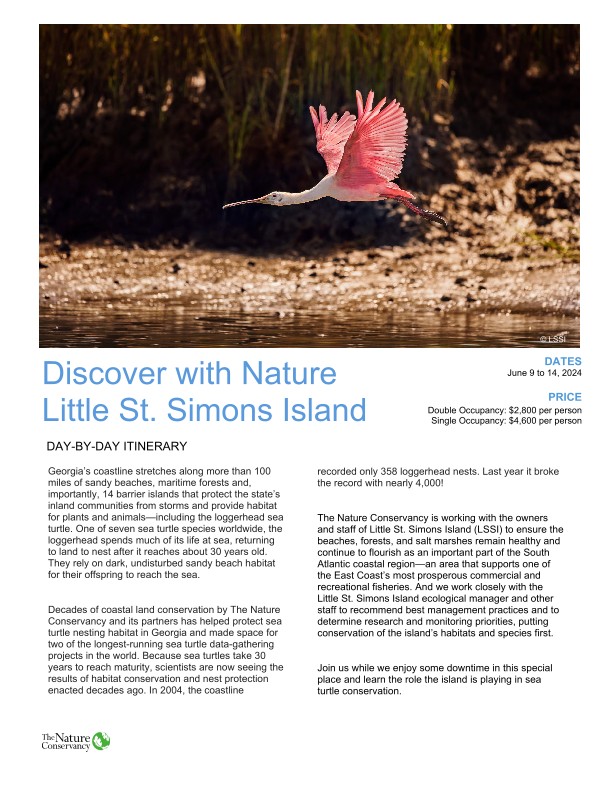Georgia’s coastline stretches along more than 100 miles of sandy beaches, maritime forests and, importantly, 14 barrier islands that protect the state’s inland communities from storms and provide habitat for plants and animals—including the loggerhead sea turtle. One of seven sea turtle species worldwide, the loggerhead spends much of its life at sea, returning to land to nest after it reaches about 30 years old. They rely on dark, undisturbed sandy beach habitats for their offspring to reach the sea.
Decades of coastal land conservation by The Nature Conservancy and its partners have helped protect sea turtle nesting habitat in Georgia and made space for two of the longest-running sea turtle data-gathering projects in the world. Because sea turtles take 30 years to reach maturity, scientists are now seeing the results of habitat conservation and nest protection enacted decades ago. In 2004, the coastline recorded only 358 loggerhead nests. Last year, it broke the record with nearly 4,000!
The Nature Conservancy is working with the owners and staff of Little St. Simons Island (LSSI) to ensure the beaches, forests, and salt marshes remain healthy and continue to flourish as an important part of the South Atlantic coastal region—an area that supports one of the East Coast’s most prosperous commercial and recreational fisheries. We work closely with the LSSI ecological manager and other staff to recommend best management practices and to determine research and monitoring priorities, putting the conservation of the island’s habitats and species first.
Join us while we enjoy some downtime in this special place and learn the role the island is playing in sea turtle conservation.
Dates: June 9-14, 2024
Price: $2,800 per person based on double occupancy, $4,600 single occupancy
For Questions and To Register, Email Us at travel@tnc.org

Royal terns wade in the surf.
Program Highlights
- NATURALISTS — Spend your days learning from the naturalists who live and work on Little St. Simons Island.
- PRISTINE BEACHES — Whether you’re walking, biking, or birding, enjoy the miles of untouched coastline populated by only you and your fellow travelers.
- BIRDING — Little St. Simons Island has both viewing towers and blinds from which to watch egrets, herons, roseate spoonbills, and more!
- BOAT TRIP — See the island from the water with a guide and learn about the contours and changes to the landscape related to the flow of the Altamaha River.
Lodging Highlights
- The Lodge at Little St. Simons — The Lodge is a collection of cabins with shared living room spaces, plus rooms in the main lodge itself. Everything is within easy walking distance of the main lodge, where you’ll have meals. Most buildings are historic and have a short flight of stairs at the entrance. The two main Lodge rooms include a ramp.

Kayakers paddle along the waterways at Little St. Simons Island.


